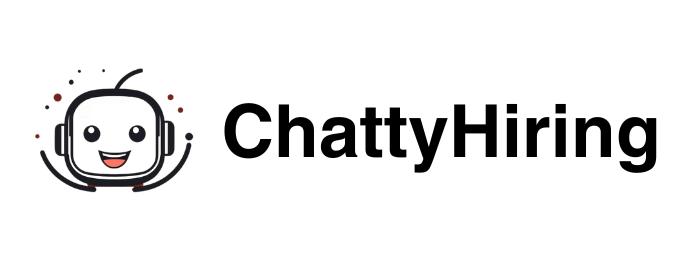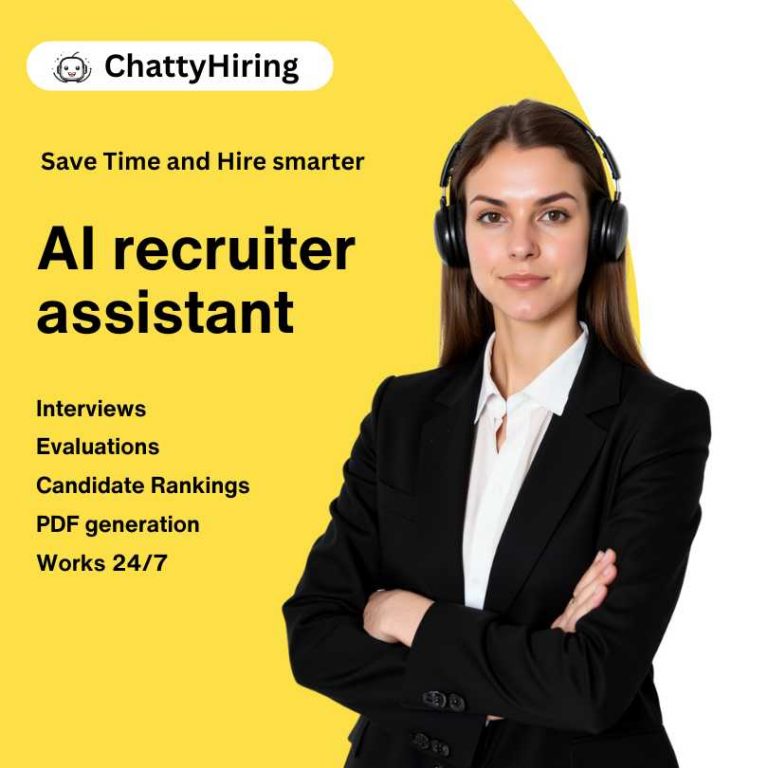In the realm of recruitment, a clear understanding of job requirements is paramount. This foundational step not only sets the stage for attracting the right candidates but also ensures that the hiring process aligns with the organization’s strategic goals. Job requirements encompass a range of elements, including necessary skills, qualifications, and experience levels.
By meticulously defining these criteria, hiring managers can create a more focused job description that resonates with potential applicants. This clarity helps in filtering out unqualified candidates early in the process, saving time and resources. Moreover, understanding job requirements goes beyond mere qualifications.
It involves grasping the nuances of the role within the context of the organization’s culture and objectives. For instance, a candidate may possess all the technical skills required for a position but may not fit well within the team dynamics or company values. Therefore, it is essential to engage with current employees and stakeholders to gain insights into what makes someone successful in that role.
This collaborative approach can lead to a more comprehensive understanding of the job requirements, ultimately enhancing the quality of hires. As highlighted by HR Examiner, aligning job descriptions with organizational needs is crucial for effective talent acquisition.
Key Takeaways
- Understanding the job requirements is crucial for hiring success
- Utilize behavioral interview techniques to assess candidate skills and fit
- Implement a structured interview process to ensure consistency and fairness
- Utilize pre-employment assessments to gain deeper insights into candidate capabilities
- Provide clear and transparent communication throughout the hiring process
Utilizing behavioral interview techniques
Assessing Key Skills and Abilities
By asking candidates to provide specific examples of how they handled various challenges or situations in their previous roles, interviewers can gain valuable insights into their problem-solving abilities, interpersonal skills, and adaptability.
Minimizing Bias in the Interview Process
One of the key advantages of behavioral interviewing is its ability to minimize bias. Traditional interviews often rely on gut feelings or subjective impressions, which can lead to inconsistent evaluations. In contrast, behavioral questions require candidates to provide concrete evidence of their competencies, making it easier for interviewers to assess their suitability objectively.
Improving the Quality of Hiring Decisions
For instance, instead of asking a candidate if they are a team player, an interviewer might ask them to describe a time when they had to collaborate with others to achieve a common goal. This technique not only elicits more informative responses but also allows interviewers to evaluate candidates against a consistent set of criteria. According to Talent Culture, incorporating behavioral interview techniques can significantly enhance the quality of hiring decisions.
Implementing a structured interview process

A structured interview process is essential for ensuring consistency and fairness in candidate evaluations. This method involves using a predetermined set of questions that are asked of all candidates applying for a specific role. By standardizing the interview format, organizations can reduce variability in candidate assessments and create a more equitable hiring environment.
Additionally, structured interviews facilitate easier comparison between candidates, allowing hiring teams to make more informed decisions. Implementing a structured interview process also helps mitigate unconscious bias that can arise during interviews. When interviewers deviate from a set list of questions or allow personal biases to influence their evaluations, it can lead to unfair advantages or disadvantages for certain candidates.
A structured approach encourages interviewers to focus on relevant competencies and qualifications rather than subjective impressions.
Furthermore, it provides a clear framework for evaluating responses, making it easier to document and justify hiring decisions.
As noted by HR Zone, organizations that adopt structured interviews often see improved candidate quality and reduced turnover rates.
Utilizing pre-employment assessments
| Assessment Type | Benefits | Challenges |
|---|---|---|
| Personality Assessments | Helps in understanding candidate’s behavior and work style | May not accurately predict job performance |
| Cognitive Ability Tests | Assesses problem-solving and critical thinking skills | May introduce bias in the hiring process |
| Skills Assessments | Evaluates specific job-related skills | May not capture candidate’s potential for growth |
Pre-employment assessments have become an integral part of the hiring process for many organizations seeking to enhance their selection methods. These assessments can take various forms, including cognitive ability tests, personality assessments, and skills evaluations. By incorporating these tools into the recruitment process, employers can gain deeper insights into candidates’ capabilities and potential fit for the role.
One significant advantage of pre-employment assessments is their ability to provide objective data that complements traditional interview methods. While interviews can be influenced by personal biases or subjective interpretations, assessments offer quantifiable metrics that can help hiring teams make more informed decisions. For example, cognitive ability tests can reveal a candidate’s problem-solving skills and critical thinking abilities, while personality assessments can shed light on how well they align with the organization’s culture.
According to Workology, leveraging pre-employment assessments can lead to better hiring outcomes and improved employee performance.
Providing clear and transparent communication
Effective communication throughout the hiring process is crucial for fostering positive relationships with candidates and ensuring a smooth experience. From the initial job posting to post-interview follow-ups, clear and transparent communication helps set expectations and keeps candidates informed about their status in the hiring process. This transparency not only enhances the candidate experience but also reflects positively on the organization’s brand.
Moreover, providing timely feedback is an essential aspect of transparent communication. Candidates appreciate knowing where they stand in the hiring process, even if they are not selected for a position. Constructive feedback can help candidates understand areas for improvement and foster goodwill toward the organization, potentially leading to future applications or referrals.
As highlighted by TLNT, organizations that prioritize clear communication during recruitment often enjoy higher candidate engagement and satisfaction levels.
Building a diverse and inclusive hiring process

The Benefits of Diverse Teams
Diverse teams bring varied perspectives and experiences that can enhance innovation and improve problem-solving capabilities. To achieve this, employers must actively seek out diverse talent pools and implement practices that promote inclusivity throughout the recruitment process.
Effective Strategies for Fostering Diversity
One effective strategy for fostering diversity is to broaden sourcing efforts beyond traditional channels. This may involve partnering with organizations that focus on underrepresented groups or utilizing platforms that cater specifically to diverse candidates. Additionally, organizations should ensure that their job descriptions are free from biased language that may deter certain candidates from applying.
Creating an Inclusive Environment
By creating an inclusive environment from the outset, employers can attract a wider range of applicants who bring unique skills and perspectives to the table. According to HR Trend Institute, embracing diversity in hiring practices can lead to enhanced organizational performance and employee satisfaction.
Establishing a positive candidate experience
Creating a positive candidate experience is essential for attracting top talent and building a strong employer brand. Candidates who feel valued and respected throughout the hiring process are more likely to view the organization favorably, regardless of whether they receive an offer. To establish this positive experience, organizations should prioritize clear communication, timely feedback, and respectful interactions at every stage of the recruitment journey.
One way to enhance candidate experience is by streamlining application processes and minimizing unnecessary hurdles. Lengthy applications or convoluted submission procedures can deter qualified candidates from completing their applications. Additionally, organizations should ensure that interviewers are well-prepared and respectful during interviews, as this reflects on the company’s culture and values.
By prioritizing candidate experience, organizations can not only attract top talent but also foster long-term relationships with potential hires who may become advocates for the brand in the future. As noted by Smart Recruiters, investing in candidate experience pays dividends in terms of talent acquisition success.
Continuous improvement and feedback
The recruitment landscape is constantly evolving, making continuous improvement an essential component of any hiring strategy. Organizations should regularly assess their recruitment processes and seek feedback from both candidates and hiring teams to identify areas for enhancement. This iterative approach allows employers to adapt to changing market conditions and refine their practices based on real-world experiences.
Feedback mechanisms can take various forms, including post-interview surveys for candidates or debrief sessions with hiring teams after each recruitment cycle. By gathering insights from these sources, organizations can pinpoint strengths and weaknesses in their processes and make data-driven decisions for improvement. Additionally, staying informed about industry trends and best practices through resources like Hppy can help organizations remain competitive in their talent acquisition efforts.
Ultimately, embracing a culture of continuous improvement ensures that organizations are well-equipped to attract and retain top talent in an ever-changing landscape.
In conclusion, effective recruitment requires a multifaceted approach that encompasses understanding job requirements, utilizing behavioral interview techniques, implementing structured processes, leveraging pre-employment assessments, fostering clear communication, promoting diversity and inclusion, enhancing candidate experience, and committing to continuous improvement. By integrating these strategies into their hiring practices, organizations can build stronger teams that drive success and innovation in today’s dynamic business environment.
When it comes to hiring manager best practices, one important aspect to consider is the use of virtual recruiters. Hiring your own virtual recruiter can bring numerous benefits to the recruitment process, such as saving time and resources. In a related article on 6 Reasons to Hire Your Own Virtual Recruiter, the advantages of utilizing virtual recruiters are discussed in detail. This article highlights how virtual recruiters can streamline the hiring process and improve overall efficiency. By staying up-to-date with the latest recruiting trends, such as the use of AI in candidate experience, hiring managers can ensure they are making informed decisions throughout the recruitment process. Check out AI Candidate Experience for more insights on how technology is shaping the candidate experience in recruitment.
FAQs
What are hiring manager best practices?
Hiring manager best practices refer to the most effective and efficient methods for recruiting, interviewing, and selecting candidates for open positions within an organization.
Why are hiring manager best practices important?
Hiring manager best practices are important because they help ensure that the recruitment process is fair, consistent, and compliant with legal and ethical standards. They also help organizations attract and retain top talent.
What are some common hiring manager best practices?
Common hiring manager best practices include creating detailed job descriptions, using structured interview techniques, conducting thorough candidate assessments, and providing timely and constructive feedback to applicants.
How can hiring managers improve their recruitment process?
Hiring managers can improve their recruitment process by staying updated on industry trends, leveraging technology for candidate sourcing and assessment, and collaborating with HR professionals to streamline the hiring process.
What are the benefits of following hiring manager best practices?
Following hiring manager best practices can lead to better hiring decisions, reduced turnover, improved employee performance, and a positive employer brand. It can also minimize the risk of legal issues related to hiring and discrimination.
-

A passionate advocate for the future of HR innovation. With expertise in leveraging AI to revolutionize recruitment processes, Carlos has a clear vision: empower HR teams while creating meaningful candidate experiences.
View all posts





